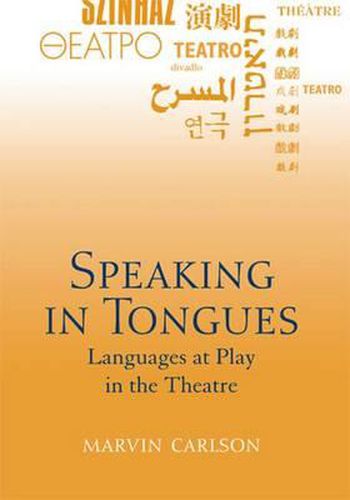Readings Newsletter
Become a Readings Member to make your shopping experience even easier.
Sign in or sign up for free!
You’re not far away from qualifying for FREE standard shipping within Australia
You’ve qualified for FREE standard shipping within Australia
The cart is loading…






Speaking in Tongues presents a unique account of how language has been employed in the theater not simply as a means of communication, but as a stylistic device essential to theater’s function. The book begins by investigating various levels of language - high and low style, prose and poetry - and the ways in which these have been used historically to mark social positions and relationships. It then considers a range of examples of multiple-language and multiple-dialect theater, from classical Greece to the postmodern era. The volume treats with special attention the triangulation of language in the postcolonial world, including the theatrical dynamics of Arabic and Indian dialects juxtaposed with French and English. Finally, Carlson considers layering of languages in the theater, such as with supertitles or simultaneous singing. Speaking in Tongues makes a vital contribution to the field of theater and performance studies, while it draws important social and political conclusions about the role of language in cultural power.
$9.00 standard shipping within Australia
FREE standard shipping within Australia for orders over $100.00
Express & International shipping calculated at checkout
Speaking in Tongues presents a unique account of how language has been employed in the theater not simply as a means of communication, but as a stylistic device essential to theater’s function. The book begins by investigating various levels of language - high and low style, prose and poetry - and the ways in which these have been used historically to mark social positions and relationships. It then considers a range of examples of multiple-language and multiple-dialect theater, from classical Greece to the postmodern era. The volume treats with special attention the triangulation of language in the postcolonial world, including the theatrical dynamics of Arabic and Indian dialects juxtaposed with French and English. Finally, Carlson considers layering of languages in the theater, such as with supertitles or simultaneous singing. Speaking in Tongues makes a vital contribution to the field of theater and performance studies, while it draws important social and political conclusions about the role of language in cultural power.